You’re probably feeling overwhelmed with clutter.
It’s taking over your life, your home. You want it GONE.
But where to start?
Taking on a project like decluttering can feel like scaling Mount Everest with nothing but a compass.
Don’t worry, we will make scaling your own Everest of clutter a piece of cake!
This guide will break down actionable steps you can take to declutter your home. It’ll lay out an achievable timeframe you can follow, plus some great tips to make your decluttering a breeze.
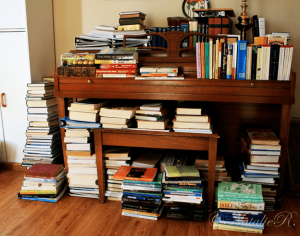
We’ll give you some tips to get started on decluttering, how to stay focused and what to do with all of items you feel no longer serve their purpose for you.
It’s okay to feel overwhelmed and uncertain while tackling a task like this.
But with this ultimate guide to decluttering this weekend, you’ll have the tools you need to take charge of this process. And you’ll end with a cleaner, neater home.
Ready to get started?
Onward and upward!
In the Mood To Declutter? Read This Before You Begin
Decluttering is a word with a lot of weight behind it. HGTV and TLC experts make it look easy. They swoop in, turn your life around and, poof, you’re decluttered.
But this is real life. This is your stuff.
We’re not counseling gurus or decluttering connoisseurs, but we can definitely help you out!
These five pre-decluttering tips can help get you started on organizing the best plan to declutter:
- Keep your goals in mind: A clear path is the easiest to follow. Are you decluttering because you’re moving? Tired of items gathering dust and space? Or perhaps your clutter needs a complete overhaul. In any case, whenever you feel overwhelmed, frustrated or you feel like you’re not making progress, remember why you’re doing this in the first place: for you.
- Don’t declutter someone else’s stuff: if you have small children, it may be tempting just to commandeer the process for them. Don’t do it–teaching your kids to declutter can help you in the future!
Teaching your kids to store, sell or donate items is something we should all teach our children. This gives them the skills necessary to minimize clutter in their own life and contributes toward keeping a cleaner home. Allowing each person in your household to go through the motions (and feelings!) of identifying items to keep, toss and donate will make sure that they are only keeping the items that they love and work for them. (We’ll talk about this more in-depth later.)
- Identify clutter hotspots: Junk drawers, garages, the first table or countertop you see when you enter your house or apartment, all of these places are very popular spots for clutter to gather. Don’t be afraid to take a peek all the way to the back of your kitchen cupboards as well. Most people have a variety of unused and outdated spices, seasonings or canned foods that they’re unaware of.
- Create a checklist: Create a list of where to start. Think of the most problematic areas and list them at the top, with the least at the bottom. Starting with the smallest task first can help you keep and maintain a productive decluttering stride.
- Take a break! Yes, it’s really okay. Decluttering is exhausting, both mentally and physically, and it definitely won’t be completed in one day. Give yourself some time to breathe, a little boost, and get back at it again when you’re energized!
The Number One Pitfall To Avoid When Decluttering (And Two Mistakes First-Timers Make)
When you’re decluttering and following the steps we’ve set up for you, you’ll begin to see progress right away.
But if you want to make progress, you have to set yourself up for success.
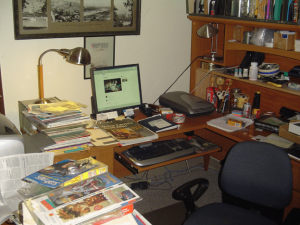
Here are three things to avoid:
- Don’t start with mementos. If you start with the sentimental stuff, you’re going to stop decluttering right when you start. Most people get lost in reminiscing over items with memories attached. Leave these for last.
- Don’t call out other people for their “junk.” If this is a family decluttering, don’t argue about who’s messier than whom. That’s a good way to shut down a productive work day.
- Don’t push. You may be feeling generous and want to give your neighbors or friends kids’ some hand-me-downs, and that’s the right attitude to have, but you’re just passing along the clutter, not getting rid of it. If you have lightly used clothes or other items, feel free to donate to local charity or nonprofit.
Done right, decluttering helps people process their past, acknowledge the person they were and the experiences they had and lets them move on to a fresh start.
Get Into The Mindset For Decluttering
During decluttering, it can be easy to feel overwhelmed. Take a step back and remember why’re you’re doing this.
Keep your goals in mind while you’re decluttering. When you’re feeling overwhelmed or frustrated, remember your goals. Start small and work your way up. Don’t rush, and feel free to take a break every now and then to evaluate your progress.
You may even have to extend your decluttering process, and that’s okay!
Once you’ve set your mind on decluttering, keeping your goals in mind and staying focused is important to achieving your goal (not just in decluttering–in life too!).
Try Decluttering for 10 Minutes At A Time!
“The journey of a thousand miles begins with a single step,” goes the ancient Chinese proverb; so, if you’re having trouble focusing and getting started, try cleaning for 10 consecutive minutes.
If you can power through 10 minutes without giving up, you’re in the right mindset!
We found a handy little 10-minute decluttering exercise, called the “Trash Bag Tango” featured in Oprah magazine.
The article suggests getting two trash bags to start: one for trash and one for donations, sales, gifts, etc.
Then, set a timer and walk around your house for 10 minutes, finding things to throw away, donate, sell or gift.
The magazine suggests doing the Trash Bag Tango as exercise once per day for two weeks, but this would be a good primer before taking on a large-scale decluttering project over the weekend.
Not only will you get a little bit of a head start, but you’ll start to recognize what to toss and what to keep–essential to know.
Handling the Guilt
It’s inevitable that we will find something of sentimental value from a former loved one while we’re decluttering.
You’re going through boxes and out falls a birthday card you received when you were a kid from a relative who has passed away.
It most likely has no monetary value to you, and you’ve been holding on to it for so long that you may feel particularly inclined to hold on to it for a little while longer.
You can feel pressure to keep certain items, but don’t feel guilty if you need to let them go.
Just because you recycled that card does not diminish the memory of that person who gave it to you. They’re always going to be with you!
In the spirit of Marie Kondo, thank the item for doing its job for you at that time. Then, recycle it.
It’s okay to let go of things that no longer serve you. Let that guide you! (More on that later in our post!)
And it’s okay to feel a little guilty. But realize that the item you are holding onto has served its purpose, and you are moving forward with a clear heart and open mind.
Prepping for Decluttering
Another good tip for prepping? Make a run to the store and grab everything you need for decluttering. There’s nothing worse than going full speed ahead on a project, only having to stop and run to the store for something you need right in the middle of it!
Don’t know what you’ll need for decluttering? Here’s a list to help you get started:
- Garbage bags
- Garbage can
- Markers or labels
- Cleaning supplies, such as gloves, wipes, dusters, disinfectant
- Ladder/stepping stools
- Laundry detergent to wash dirty clothes/cleaning cloths
Storage bins and boxes are popularly purchased right before a decluttering or moving event, only to realize later on that you had extra boxes or totes stored away. Be sure you take the time to condense and reuse any boxes you already have before buying more.
Make It Happen
Decluttering is an intense job, and you’re afraid you will get stuck as soon as you begin.
Here’s how you can commit to your plan:
- Block time out on the calendar. Pick the day and let others know you will not be available.
- Take a before photo. (This will come in handy later.)
- Start early in the morning. Work for no more than two hours at a time and eliminate distractions, such as phones and television. Build in breaks.
- Work category by category to avoid getting overwhelmed. Start with something easy and actionable, such as your clothing or books.
- Gather all the items in one place. That means every size. Every era. Every bridesmaid dress.
How To Decide What Not To Keep
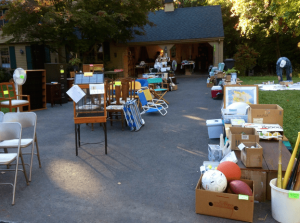
Now that you’ve gathered your items into one big pile, how do you decide what to throw away? After all, none of this is “junk.” At one time, it meant something to you.
Marie Kondo’s famous test asks you to hold each item and decide if it still “sparks joy.”
But what if your feelings are fickle? What if everything “sparks joy”?
- Ask different questions. What do you want to keep? When you picture your decluttered space, what do you see? When you see your ideal wardrobe, what is your style? You are ready for the next test:
- Keep only what you truly love, not that which you feel an obligation toward. (More on this in a bit.)
- Repeat this process, one category at a time.
- Pause when you’re done with each category to mentally and physically reset.
- Once you’ve made your decisions, try to remove the unwanted items out of your space. This completes the process of decluttering.
Get Your Family Involved With Decluttering (And What To Say To Those Who Won’t Get On Board)
You committed to decluttering. It’s been on the calendar, you woke up early and got started.
You’re hard at work when other family members see what you’re up to. They may have questions or objections.
Maybe your decluttering spirit will rub off on other family members. Here’s how to get them involved.
- Divide the tasks based on strengths, says Jordan Marks, co-founder and owner of It’s Organized, with locations in New York City and New Jersey. A five-year-old can test the pens and toss the ones that have dried up, for example.
- If one family member is too sentimental or too much of a “repurposer” to be a decision maker, redirect them to keep them from taking things out of the recycling bin.
- It can be especially stressful for parents to see what their children discard, so keep in mind that some tasks should be done in private to avoid bruising feelings unnecessarily.
- Express to your family and housemates the common goals and benefits to all members of the household. Having this conversation will help you bond. Think of this process as creating space (whether physical or as an energy) for something new.
Learn How And Why Clutter Builds Up Around Your House
We all have our blind spots. Perhaps you have an area that’s unofficially dedicated to containing your clutter. One blogger and author refers to this as the “invisible corner.” If the clutter has been there long enough, you don’t even notice it anymore.
But your guests and family do.
Here are three ways to create new habits and prevent clutter buildup.
- Flat surface clutter rule: HappySimpleMom.com has a simple, but ingenious, rule: if it is a flat surface, like a floor, table or countertop, it should be cleared of anything that is not a permanent fixture. So, if random papers and objects that don’t belong in the kitchen tend to congregate on your kitchen counter, make a point to get those cleared off right away.
- Clutter attracts clutter: Also from HappySimpleMom.com is almost an “oh duh” moment. If you have an area with clutter, it tends to gather more clutter. You see a pile of items on your counter and think, “well, what’s one more thing?” However, all of these little things tend to add up, then you’re suddenly overwhelmed.
- Put a time limit on items: If you haven’t used or worn your item in a set amount of time, throw it away or donate. Many professional organizers recommend using 12 months as a timeline.
Dealing With Difficult Categories When Decluttering
So you want to cut down to the bare necessities — in your shoe closet, your dresser drawers, the garage. Why not declutter your home office?
Paperwork is pervasive. Here’s how to declutter your home office:
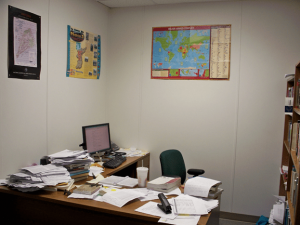
- Get rid of paperwork. Most paperwork can be discarded.
- Keep only three categories:
- Papers that need attention (forms that must be returned, bills to pay).
- Papers that must be kept (such as contracts).
- Other items that you feel should be saved for another reason. However, most paperwork, such as appliance manuals, old credit-card statements and the like, is not necessary.
- Take a stand when it comes to miscellaneous items. When it comes to these small items (maybe it’s a ticket stub or a cheap sticker from your cute niece), keep items you love. Not just because.
Embrace and Curate
If you find that you are not willing to put yourself through the intense and spiritual process of decluttering, or if you’re not ready to process the memories and part with your past, that’s okay!
This is your home, your life. But don’t let your belongings take over. Make it work for you. Here’s how:
- Limit your odds and ends to one curio cabinet or one curated wall.
- Follow the organizers’ rule of thumb: one in, one out. For every new item you bring home, one item has reached the end of its time with you.
- When you can’t discard an item, for personal reasons, challenge your thinking. Consider why you have that item in the first place. Every object has a role to play. You’ll be surprised when you realize how many items have already fulfilled their role.
Go Minimal (And Stay Clutter-Free)
If you’ve dedicated time to decluttering, you’re probably starting to feel good about yourself.
For example, the walkway is clear. It’s not just a path. Items stand out on your shelf; they’re not sharing the space with old lottery tickets and receipts.
Congratulations on making it this far!
Decluttering is time well spent, says Joshua Becker, who runs a site called BecomingMinimalist.com. But he emphasizes that decluttering only addresses a surface-level problem.
That’s the first step.
Here’s how to take this concept a step further to embrace minimalism.
- Challenge yourself to discover how little you actually need. (One recent study shows that people spend up to $450 per month on impulse buys.)
- Pick one item — just one! — from a collection (such as one of your late grandmother’s teacups) to represent and preserve that memory of a collection that meant so much to you or a loved one. The rest of the items in the collection do not inherently add more value, and they can detract from it, says author, blogger and podcaster Gretchen Rubin. She has spent several years helping people find happiness. In a New York Times happiness guide, she advises:
- Stop buying tchotchkes on vacation.
- Spend money on experiences, not things.
- Curtail excessive decorations: having too many decorations in one space tends to overwhelm the eye and make a room look more messy. Keep decor items down to a minimum, using only the items that really enhance the space and bring you joy.
Declutter Your Way To Profit: Host A Garage Sale
Pre-tip: It’s all right if you don’t have the time or energy to engage in the process of holding a garage or yard sale. Planning one can be quite the undertaking. If you’d rather donate your items instead, scroll down to see our section on donations.
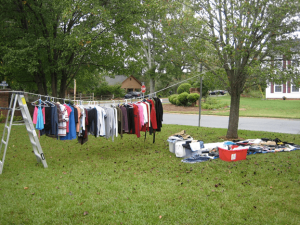
If you’re still with us and you’re interested in decluttering your way through a sale, we’ll show you how to get organized for a garage sale in seven steps:
- Pick a date and begin setup in advance. Generally, about a month or two before a garage sale is a good time to get your things decluttered, in order and sorted. Check with your community to see if there are neighborhood-wide garage sale days, which will attract more customers.
- Don’t bite off more than you can chew. Decluttering doesn’t require you to conquer your entire home in one day. Section out a space each day or week to accomplish things easier and faster.
- Plan a sale once, or twice, a year. A sound decluttering strategy is one in which you clear out any unwanted or unused goods consistently. As you realize something in your home is no longer needed and in salable condition, set it aside in a designated garage-sale bin or charity bin. A clean home is a happy home! Plus, you’ll feel much better helping your community.
- Don’t buy plastic tubs…yet. Sometimes it’s easy to get ahead of ourselves when we’re planning a garage sale, and you may find yourself cutting into your profits before your first sale. For organizing and displaying items for your garage sale, use any sturdy boxes or condense plastic containers you already have. As you clear clutter from the house, you may find extra containers you weren’t aware of, saving you a few extra dollars in the process.
- Color code the items you’re selling. While you’re in the midst of sorting your items, keep a packet of colorful stickers nearby. These are cheap, usually purchased at a dollar store, and can help keep you organized when you’re pricing your items later. Each color can represent a specific price — and this also works as a cheap and efficient inventory system!
- Reuse your shopping bags. If you have leftover shopping bags from grocery trips past, hand ‘em out to your customers for ease and convenience. This doubles as a way to clear out unneeded bags as well!
- Advertise! In the digital era, Facebook and other social media platforms are your friend! Reach out to your friends, family and local Facebook communities to display your pictures, signs and more!
In fact, here are just a couple local Facebook Groups that are perfect for that:
Don’t forget to include outdoor advertisements! Cheap and brightly colored posterboard can be bought at any nearby market or dollar store. Ensure your sign has a font large enough to be seen at a car’s distance.
Place important details including:
- Begin and end times and dates of the sale.
- Location of the sale.
- Large arrows indicating direction on the poster and along the road.
Without this extra step, all your garage-sale plans and efforts will have been for nothing, but at least you have a cleaner house now!
Once your sale concludes, or you’ve finished your decluttering process, donate any leftover items to a local charitable organization or center of your choice.
Declutter And Donate Your Unwanted Goods
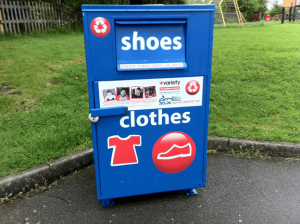
We’ve already covered how decluttering can be intense, exhausting and beneficial to you on a psychological level. It can even be profitable!
Keep those feelings coming!
Now we’ll teach you how to help the greater good by giving your ex-clutter a chance to improve someone else’s life.
Donating is part of the cycle of life and ownership of a durable object. You own it for a time, use it, enjoy it and then offer it out into the world to keep serving its mission.
BEFORE YOU DONATE
Remember that before you donate, you should ensure your items are not dirty, broken or “questionable” in quality or nature.
Check with the manufacturer of your donated good to make sure the item wasn’t recalled. If that’s the case, please contact the manufacturer and return the item.
If you’re looking to get rid of unused or old electronics, make sure the place you want to donate to accepts electronics. If not, electronics stores like Best Buy accept recycled electronics.
You can also use Call2Recycle to help you find drop-off locations for items like batteries or old cellphones in your area as well!
PLACES TO DROP OFF
Here’s a list of nationally recognized places that generally accept donations. Remember, always follow their criteria and donation guidelines before donating items:
DONATE TO YOUR LOCAL SCHOOL
From elementary to college, all schools love donations! New and/or unopened office supplies are best, and individual school teachers accept donations as well. Miscellaneous arts and crafts supplies, pencils, pens and notebooks are all great examples.
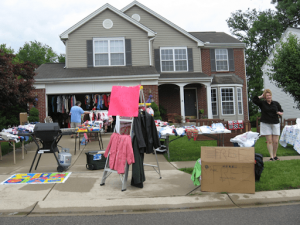
The younger kids in elementary specifically appreciate any donations in the form of gently used or new winter clothing, school clothing, backpacks, shoes and more.
HELP OUT LOCAL RELIGIOUS ORGANIZATIONS
A charitable spirit is a human trait and nondiscriminatory. Reach out to your local mosques, synagogues, churches, temples and any other religious establishments. They’re a hub of any community and are in tune with what the community needs.
COMMUNITY CENTERS
Another hub is a community center! They have athletic activities and amenities like indoor and outdoor courts, free educational and art courses and many other goodwill services for the community. They’re often a great center for outreach, so look for yours and ask about what you can donate to help!
FOOD PANTRIES
It goes without saying, but we’ll mention it anyway: PLEASE DO NOT DONATE USED OR ABOUT-TO-BE EXPIRED FOOD ITEMS.
If you’re looking to declutter your pantry and give back, that’s wonderful, but do so not at the cost of someone’s health. Ensure you check your expiration dates and speak with your local food pantry about accepted items and health guidelines.
Keep Clutter From Returning To Destroy Your Life With One Simple Trick

“Destroy” may be an overstatement, but as you’ve seen, clutter can take control. Don’t let that happen.
Expert organizers advise you to have a donation box in your house at all times. That way, if you’re just going about your life and realize you don’t need an item, you can put it in the donation box.
When the box is full, you can take it to your local charity. Plus, it’s nice to know that even though you don’t need that item, it has a place to go until you can take your donations to their next destination.
Make Decluttering A Way Of Life
Now that you’ve:
- Processed your past.
- Cleaned your closets.
- Filed or thrown away your paperwork.
- Hosted a garage sale.
- Delivered your items to charity.
What do you do next? Celebrate!
Take an after photo. This will serve as a reminder how fresh and clean the space can feel. It will encourage you to not let clutter get out of hand again.
Keep Clutter From Returning To Destroy Your Life With One Simple Trick
“Destroy” may be an overstatement, but as you’ve seen, clutter can take control. Don’t let that happen.
Expert organizers advise you to have a donation box in your house at all times. That way, if you’re just going about your life and realize you don’t need an item, you can put it in the donation box.
When the box is full, you can take it to your local charity. Plus, it’s nice to know that even though you don’t need that item, it has a place to go until you can take your donations to their next destination.
It’s Time To Tango
Take 10 minutes right now to do that “Trash-Bag Tango” we talked about at the beginning.
Grab two bags.
Set a timer for 10 minutes.
Go throughout your home and challenge yourself — Yes, this is a test! — to find several items that are trash or ready for donation and put the items in the respective bags.
Take a moment to reflect on how you feel.
You can practice this exercise whenever you feel overwhelmed or frustrated with your environment. It takes 10 minutes, and results are long-lasting!
Now, you are ready to take on that Everest of decluttering!
Hopefully, you’ll see that with the right tips and tricks, not only can decluttering be manageable, but it can be FUN!

